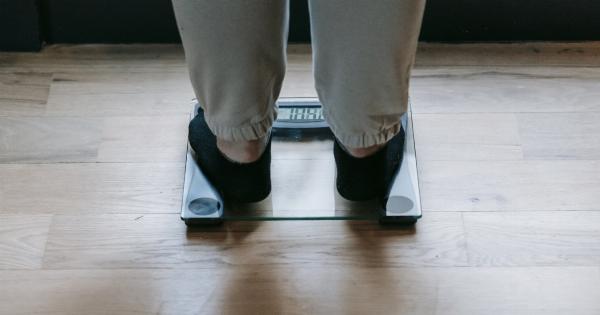Urinary incontinence is a common and often embarrassing condition that affects millions of women worldwide. It is characterized by the involuntary loss of urine, which can range from occasional mild leaks to more severe episodes.
While several factors contribute to the development of urinary incontinence, studies have shown a strong correlation between excess body weight and the risk of experiencing this condition. In this article, we will explore the connection between excess pounds and urinary incontinence in women and discuss potential ways to prevent and manage this troubling issue.
Understanding Urinary Incontinence
Urinary incontinence can be classified into different types, including stress incontinence, urge incontinence, overflow incontinence, and functional incontinence.
Stress incontinence is the most common type among women and occurs due to weakened pelvic floor muscles. This weakness can be provoked by various factors such as pregnancy, childbirth, menopause, and obesity.
The Link Between Excess Weight and Urinary Incontinence
Several studies have established a connection between excess body weight and the development of urinary incontinence.
The additional weight puts excessive pressure on the abdominal and pelvic organs, including the bladder, causing stress on the pelvic floor muscles. This extra stress weakens the muscles responsible for supporting the bladder and controlling urine flow, leading to urinary incontinence.
Research has shown that every 5-unit increase in body mass index (BMI) is associated with a 20% higher risk of developing urinary incontinence. Furthermore, obesity is particularly linked to stress incontinence.
The excessive fat tissues in the abdominal area can compress the bladder and further contribute to urinary leakage, especially during activities that increase intra-abdominal pressure, such as coughing, sneezing, or lifting heavy objects.
Preventing Urinary Incontinence through Weight Management
The correlation between excess weight and urinary incontinence suggests that weight management can play a vital role in preventing or reducing the severity of this condition. Here are some strategies that may help:.
1. Balanced Diet and Regular Exercise:
Achieving and maintaining a healthy weight through a balanced diet and regular physical activity can decrease the risk of urinary incontinence.
A diet rich in fruits, vegetables, whole grains, and lean proteins can provide essential nutrients and help manage weight. Engaging in regular exercise, such as walking, swimming, or strength training, can strengthen the pelvic floor muscles and improve bladder control.
2. Pelvic Floor Exercises:
Pelvic floor exercises, commonly known as Kegel exercises, can help strengthen the muscles that support the bladder, urethra, and rectum.
These exercises involve contracting and relaxing the pelvic floor muscles repeatedly to improve muscle tone and control. Regularly practicing pelvic floor exercises can significantly reduce the risk of urinary incontinence.
3. Avoiding Smoking and Alcohol:
Smoking and excessive alcohol consumption can exacerbate urinary incontinence symptoms. Nicotine and alcohol irritate the bladder and increase the frequency of urination.
Quitting smoking and moderating alcohol intake can have a positive impact on bladder control and reduce the risk of urinary incontinence.
Managing Urinary Incontinence
For women already experiencing urinary incontinence, various treatment options can help manage the condition effectively. Some of these options include:.
1. Lifestyle Modifications:
Implementing lifestyle changes like losing weight, avoiding bladder irritants (caffeine, spicy foods), and establishing a regular toileting schedule can reduce the severity of urinary incontinence.
2. Medications:
Certain medications, such as anticholinergics, can help control urinary incontinence by relaxing the bladder muscles. However, these medications should only be taken under the guidance of a healthcare professional.
3. Medical Devices:
In some cases, medical devices such as pessaries or urethral inserts may be prescribed to support the bladder and prevent urinary leakage.
4. Surgical Interventions:
Surgical procedures may be considered for women with severe urinary incontinence that does not respond to other forms of treatment. These procedures aim to provide additional support to the bladder and urethra.
Conclusion
Excess weight is strongly associated with an increased risk of urinary incontinence in women. The additional pressure on the bladder and weakened pelvic floor muscles contribute to the development and severity of this condition.
However, through weight management strategies such as a balanced diet, regular exercise, and pelvic floor exercises, as well as lifestyle modifications, urinary incontinence can be prevented or effectively managed. It is important for women to prioritize their overall health and well-being and seek medical advice if experiencing symptoms of urinary incontinence.





























